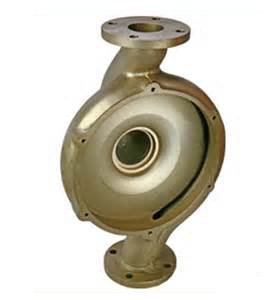Green Sand Casting:
Bonded sand is compacted over a wood or metal pattern. After the mold halves are removed from the pattern, cores may be added to produce internal part features or undercuts. The halves are then joined to form a complete mold into which metal is poured. After metal solidifies, castings are removed from mold, cleaned and ready for use.
This is the most versatile of the casting processes with no limits on material or quantity, producing parts from ounces to thousands of pounds.
Tolerances start at +/.030; surface finish typically 250 – 500 RMS depending on the material being cast.
In comparison with other processes, the tooling cost is the lowest while piece price is low to medium.
Materials Poured: Iron, gray & ductile, steel, aluminum, brass and bronze.
No Bake / Air Set Sand Casting:
Loose sand combined with a chemical catalyst is poured into wood boxes containing the pattern. The sand sets up over the course of several minutes producing durable mold halves which are then removed from the boxes, assembled with cores (if necessary), joined together and poured.
While there are no limits on material, size or quantity, this process is generally used for medium sized to very large parts in low to medium quantities. The durability of the mold allows for lengthy assembly time so it is ideal for producing complicated parts.
There may be some improvement in surface finish and tolerance over a green sand casting.
The tooling cost is similar to the green sand process while piece price is higher.
Materials Poured: Iron, gray & ductile, steel, aluminum, brass and bronze.
Bronze Sand Casting

Steel Sand Casting

